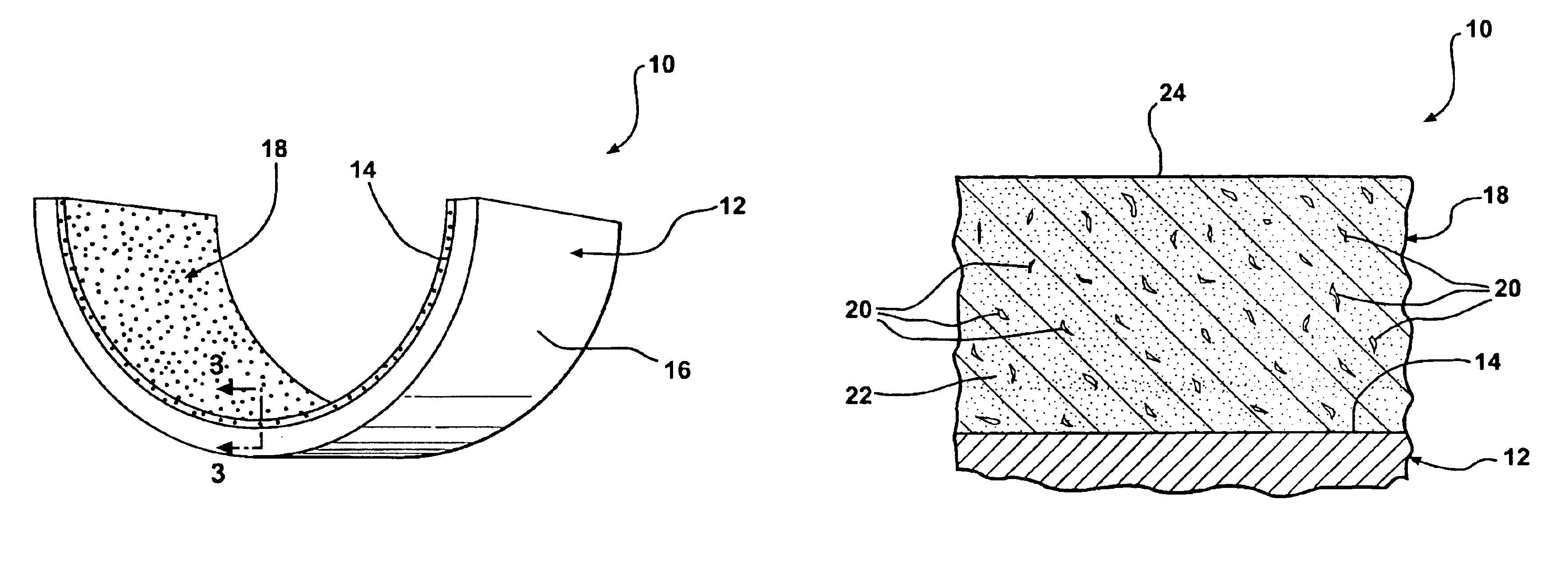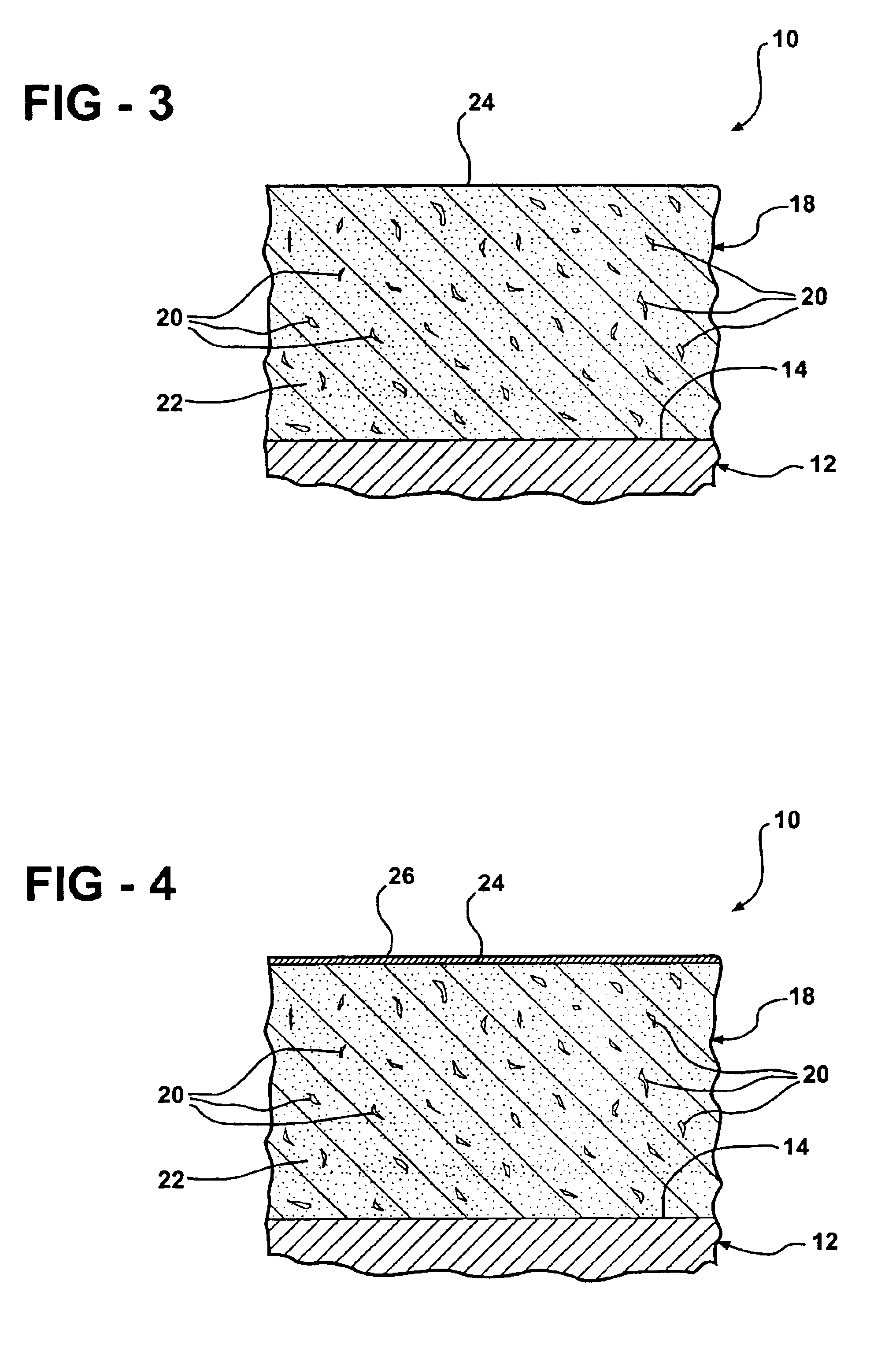Lead-free bearing
a bearing and bearing technology, applied in the field of sliding-type bearings, can solve the problems of unduly sacrificing the strength, wear and seizure characteristics of engine bearings, and no one has demonstrated the ability to truly substitute for lead, so as to enhance the wear and seizure resistance characteristics of bearings, increase the lubricity of bearings, and effectively mobiliz
- Summary
- Abstract
- Description
- Claims
- Application Information
AI Technical Summary
Benefits of technology
Problems solved by technology
Method used
Image
Examples
example 1
A 100% water atomized powder composition was prepared having 90 parts copper, 10 parts tin and an amount of bismuth equal to 3.2 wt. % of the copper-tin present in the mix. The water atomized powder was consolidated and sintered onto a steel backing strip according to bearing manufacturing practice and the physical properties of the sintered layer determined as set forth in Table 1.
example 2
The same process was repeated with 100% water atomized, 90 / 10 copper-tin with 5 wt. % bismuth. The physical properties were measured and are given in Table 1. It will be seen that there is no appreciable difference in the properties from about 3-5 wt. % bismuth with the 100% water atomized powder.
example 3
A 100% gas atomized powder was prepared containing 90 parts copper, 10 parts tin, and an amount of bismuth equal to about 4 wt. % relative to the amount of copper and tin in the powder composition. Test samples were compacted and sintered in accordance with the procedure mentioned above for Example 1. The physical properties were measured and are set forth in Table 1. It will be seen that there is no appreciable difference in the physical properties of the 100% gas atomized powder relative to the 100% water atomized powder containing about the same amount of bismuth.
PUM
| Property | Measurement | Unit |
|---|---|---|
| elongation | aaaaa | aaaaa |
| tensile strength | aaaaa | aaaaa |
| yield strength | aaaaa | aaaaa |
Abstract
Description
Claims
Application Information
 Login to View More
Login to View More - R&D
- Intellectual Property
- Life Sciences
- Materials
- Tech Scout
- Unparalleled Data Quality
- Higher Quality Content
- 60% Fewer Hallucinations
Browse by: Latest US Patents, China's latest patents, Technical Efficacy Thesaurus, Application Domain, Technology Topic, Popular Technical Reports.
© 2025 PatSnap. All rights reserved.Legal|Privacy policy|Modern Slavery Act Transparency Statement|Sitemap|About US| Contact US: help@patsnap.com



